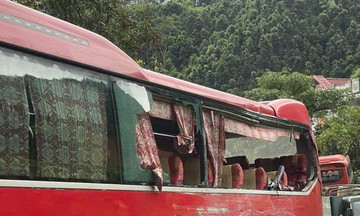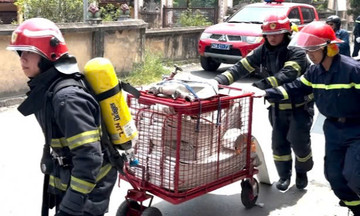This assessment was made at a conference on 13/8, gathering experts, scientists, and intellectuals to provide feedback on draft documents for the 1st Ho Chi Minh City Party Congress, term 2025-2030. This is the city's first congress after merging with Binh Duong and Ba Ria - Vung Tau.
Chairman of the Ho Chi Minh City People's Committee, Nguyen Van Duoc, said that in the next term, the city aims to continue its leading role in driving national development. With the model of "one space - three regions - one special zone", the new Ho Chi Minh City aims to become a world-class metropolis.
The three regions include: the former Ho Chi Minh City as the core urban area, financial center, and high-tech hub; the former Ba Ria - Vung Tau as the center of the marine economy and clean energy; and the former Binh Duong as the center of high-tech industry. The Con Dao special zone aims to become a "luxury tourism paradise".
The merger has tripled Ho Chi Minh City's area to over 6,700 km2, increased its population to about 15 million, and boosted its GRDP by 1.5 times, creating significant advantages compared to other localities. However, to become a globally attractive destination, the city needs to address existing limitations and new challenges.
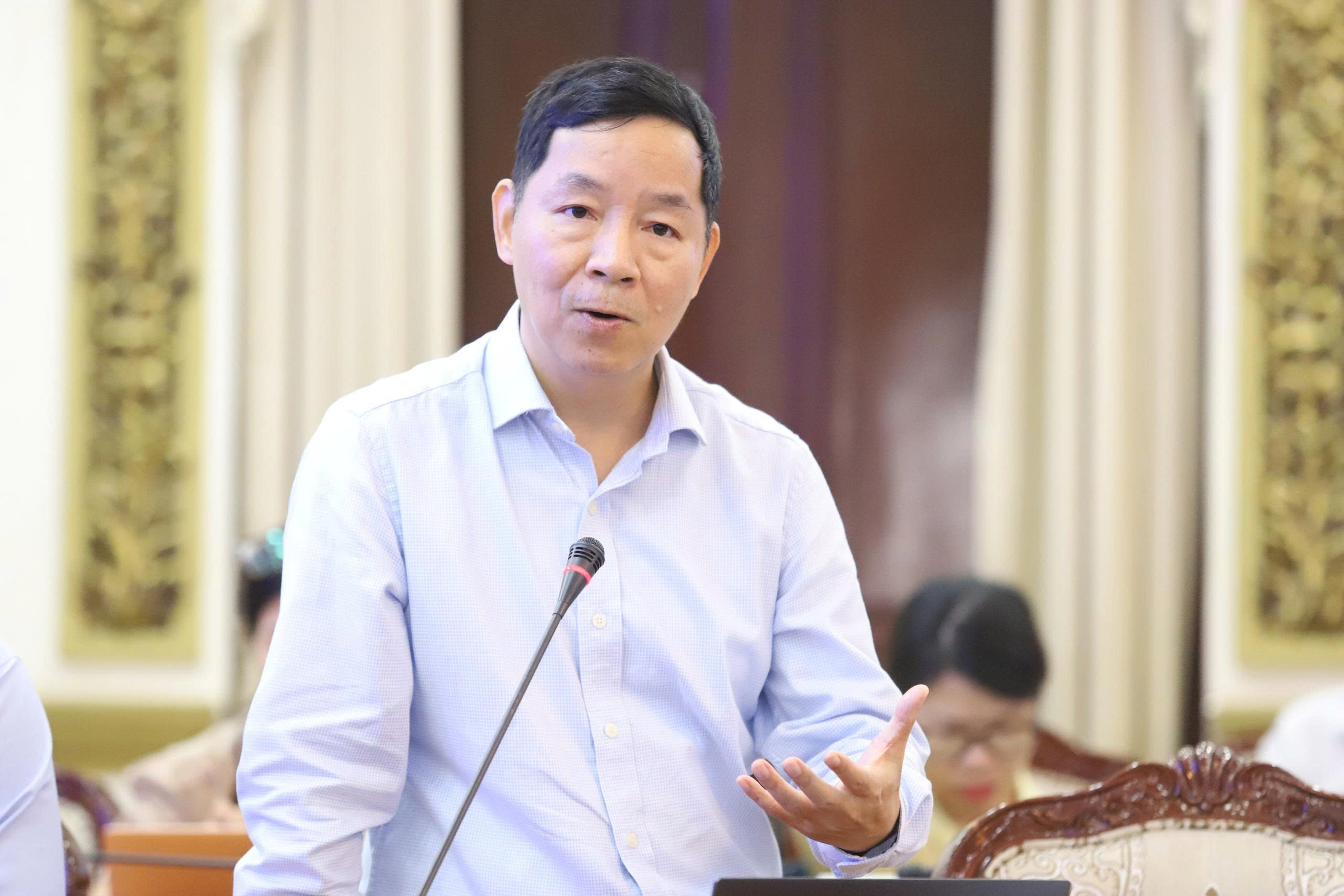 |
Dr. Vu Thanh Tu Anh, member of the Advisory Council for the implementation of Resolution 98, speaks at the conference, morning of 13/8. Photo: An Phuong |
Dr. Vu Thanh Tu Anh, member of the Advisory Council for the implementation of Resolution 98, speaks at the conference, morning of 13/8. Photo: An Phuong
Dr. Vu Thanh Tu Anh, a member of the Advisory Council for the implementation of Resolution 98, noted that before the merger, the former Ho Chi Minh City had gradually lost its leading position, while Binh Duong, once a model, had lost its strong influence in recent years.
"The new city needs to regain its pioneering role in this new context," Tu Anh said. According to him, transport infrastructure connecting the provinces is not seamless; data and digital governance have not been adequately invested in; there is a shortage of high-quality human resources; and especially, the mechanism for rewarding and protecting innovative officials is unclear.
"Officials may dare to think but not necessarily dare to act. If they do act, will they be protected, and what will the policies be?" he asked, suggesting the city quickly enact mechanisms to protect and encourage civil servants to implement strategies.
Associate Professor Dr. Nguyen Xuan Thanh, a lecturer at the Fulbright School of Public Policy and Management, pointed out that the ratio of total social investment to GRDP of the new Ho Chi Minh City is only about 23% (with oil and gas) or over 24% (without oil and gas), lower than the national average of 33-34%.
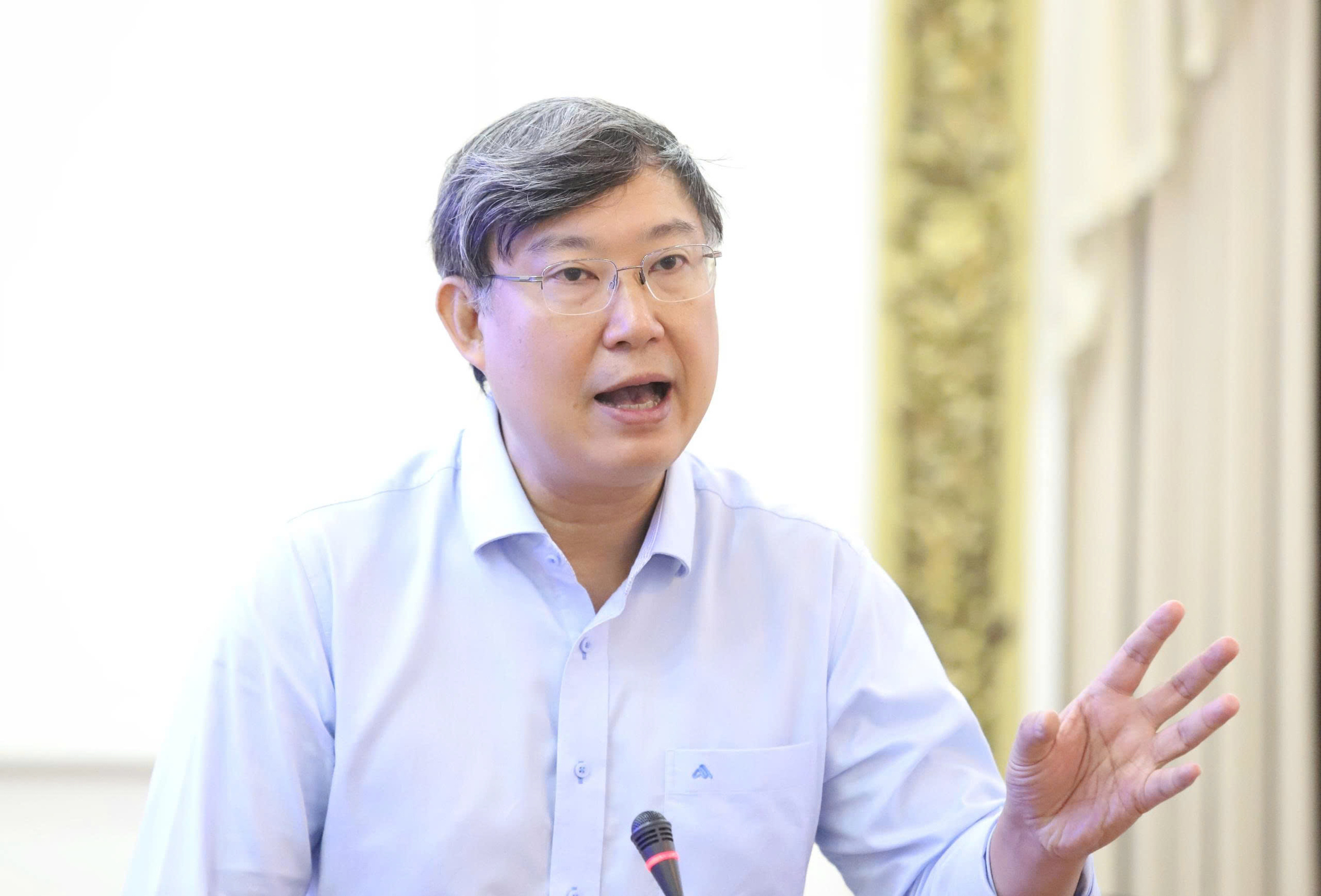 |
Associate Professor Dr. Nguyen Xuan Thanh, senior lecturer at the Fulbright School of Public Policy and Management, speaks at the conference. Photo: An Phuong |
Associate Professor Dr. Nguyen Xuan Thanh, senior lecturer at the Fulbright School of Public Policy and Management, speaks at the conference. Photo: An Phuong
"No metropolis has such a low investment rate. In major cities around the world, the reinvestment rate must exceed the national average," he said, proposing to raise this rate to 35% to create growth momentum. However, most of Ho Chi Minh City's revenue currently has to be submitted to the central government, leaving limited resources, coupled with difficulties in mobilizing social capital, leading to slow disbursement by investors.
Professor Dr. Tran Ngoc Anh, Indiana University (USA), warned that automation and AI trends could polarize the labor market, retaining only very high-skilled or very low-skilled jobs, putting pressure on medium-skilled workers.
With Binh Duong, a key industrial area where FDI is still concentrated in processing and manufacturing, he suggested focusing on developing high-tech industries, transforming the former Ho Chi Minh City core into a financial and technological center, while promoting training and retraining of human resources.
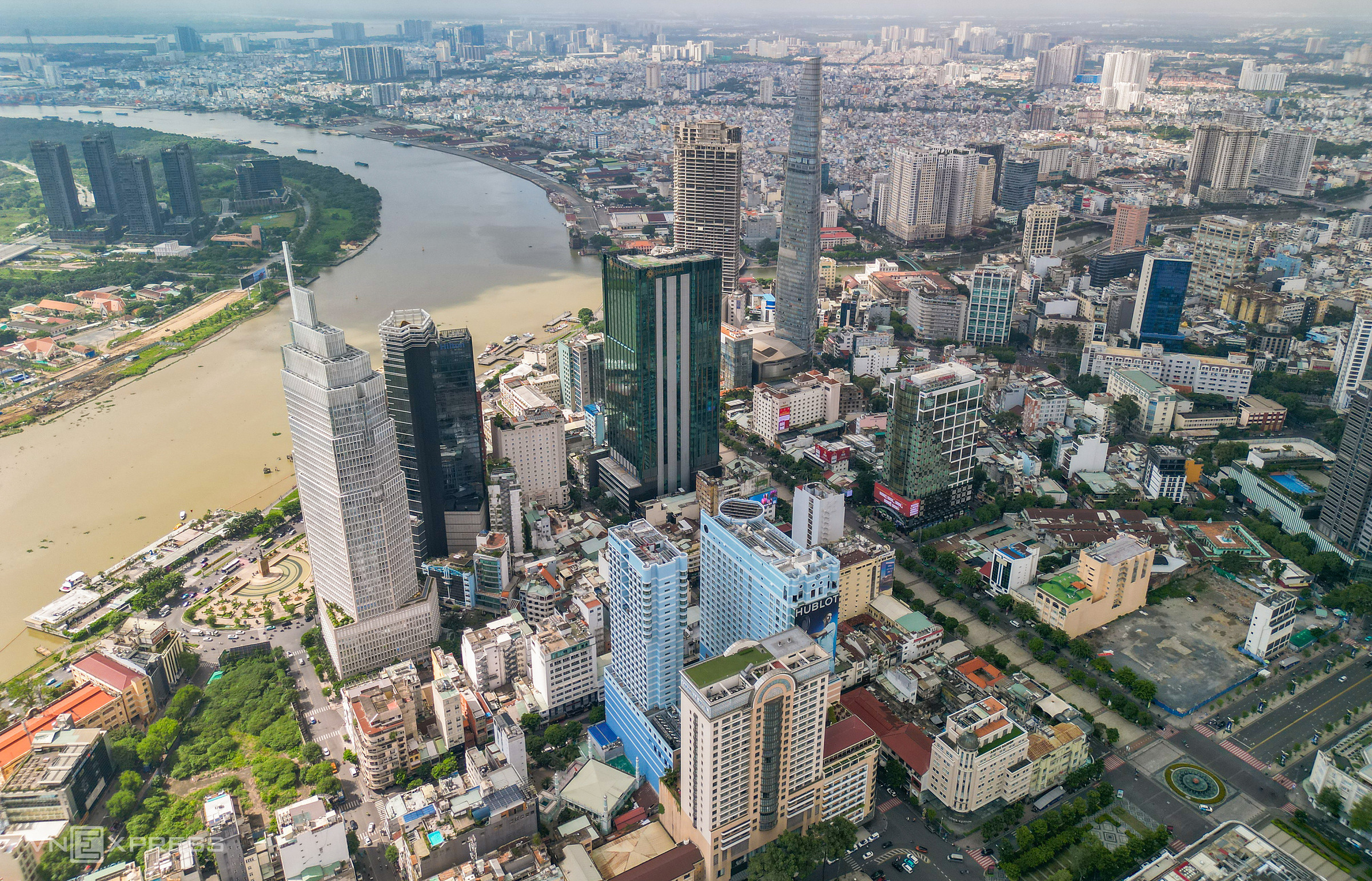 |
Ho Chi Minh City center, 7/2025. Photo: Quynh Tran |
Ho Chi Minh City center, 7/2025. Photo: Quynh Tran
Meanwhile, Dr. Tran Du Lich, who has participated in drafting documents for many terms of the Ho Chi Minh City Party Congress, suggested the city needs a plan to deal with long-delayed projects such as flood control, Thu Thiem new urban area, Cu Chi Safari, Binh Quoi - Thanh Da, and many other private projects.
He also emphasized the need to expedite the renovation of old apartments, canal houses, social housing, and urban renewal through public-private partnerships, prioritizing socialized resources and special mechanisms to improve residents' lives.
Ho Chi Minh City aims to become a smart, modern city by 2030, leading Southeast Asia in economics, finance, commerce, education, healthcare, and science and technology; and by 2045, to become a leading economic, financial, scientific, cultural, and tourism center in Asia, with green and livable development.
The city has set 23 targets, including an average GRDP growth of 10% per year; by 2030, GRDP per capita will reach 14,000-15,000 USD; total social investment will reach 35-40% of GRDP over 5 years; and the digital economy will account for 30-40%.
Le Tuyet








